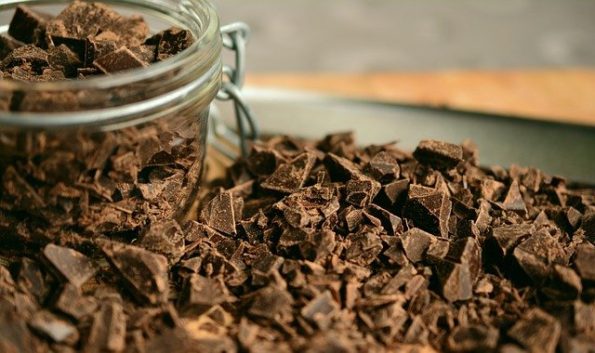
Enjoyed your Easter chocolate? Well, if like me you are still working on it (), please sit down and appreciate a piece of this heavenly food while reading about theobromine. This compound is the main alkaloid of Theobroma cacao (cacao tree) and it is therefore found in chocolate, especially in the dark one [1], whereas its concentration is much lower in milk and white chocolate. Theobromine was first discovered in cacao beans in 1841, while the chemist Emil Fischer was proposing its chemical synthesis in 1882 [2]. Besides in the “food of the gods” (this is the literal meaning of the Greek-derived word Theobroma), theobromine is also found in green coffee beans, mate, tea and other related plant species [1].
Biological activity of theobromine
If you compare the structure of theobromine and caffeine, they look pretty similar and indeed they share some of the effects on human body, although the effects induced by theobromine are generally milder compared to those induced by caffeine at the same doses [3]. Nevertheless, growing evidence suggests that theobromine might also perform qualitatively different actions, despite having the same molecular targets [4], or at least that is what we know so far. Therefore, the reasons for these differences are not established yet. Chemically, caffeine and theobromine are classified as methylxanthines. Theobromine is also produced in the human body as a product of metabolism of caffeine [3].
Concerning its activity, it is reported to be a respiratory stimulant agent, smooth muscle relaxant, vasodilator, myocardial stimulant, and diuretic [3, 4, 5, 6]. As for any other molecule, these effects are the results of the activity at molecular level.
Theobromine also acts as a very mild stimulant, by antagonising adenosine receptors [6]. These receptors are proteins found in the membrane of several types of cells, including neurons, and they have a specific site where adenosine can bind and activate them. Now, in brain cells, there are two types of these receptors; one kind in which adenosine binding leads to slowing down neural activity (these are found in the wake-promoting neurons), and another type for which this binding leads to activation (these are found in sleep-promoting neurons, instead). Basically, the interaction between adenosine and its receptors will result in a weaker wake signal and a stronger sleep signal, and therefore in sleepiness. Theobromine and caffeine chemical structures resemble adenine, a part of the adenosine molecule, and thus can bind to the receptors. However, since their structure is not exactly the same as that of adenosine, they do not activate the receptors, while still occupying those sites. Consequently, adenosine cannot act until the receptors are cleared of the antagonizing molecules. However, it is worth mentioning that theobromine has a much lower affinity for these receptors compared to caffeine (and, as always, this depends on their chemical structure).
Theobromine appears to be inhibiting also important enzymes [6], i.e., the cyclic nucleotide phosphodiesterases, which are involved in the regulation of the intracellular level of cyclic nucleotides. The latter are molecules involved in the complex communication system within the cell and therefore regulate several important biochemical and physiological processes [7]. No wonder that molecules affecting the activity of the above-mentioned enzymes influence several functions.
Finally, probably you already know that chocolate is not good for your dog; theobromine is toxic to many mammals, including pets [2].
.

Role of theobromine in planta: an underexplored aspect
In plants, methylxanthines have a protective role against pathogens and insects and seem also to be involved in plant-plant interactions [3]. These roles in planta have been more widely studied for caffeine, however it might be interesting to understand whether theobromine acts in a similar manner. Unfortunately, there is not enough evidence. However, there are studies on the distribution of theobromine in cacao plants according to organs and developmental stages [8]. The highest theobromine content in Theobroma cacao is normally found in the cotyledons (embryonic leaves) of mature beans. Interestingly, the young fruits also contain this alkaloid, but its concentration sharply decreases over time. A similar phenomenon is also observed for the leaves: young leaves contain a certain amount of theobromine, which decreases during leaf development. This suggests that theobromine could be involved in the protection of young tissues. However, this is just an hypothesis and surely needs to be further explored.
Source: Phyto-chem.com











